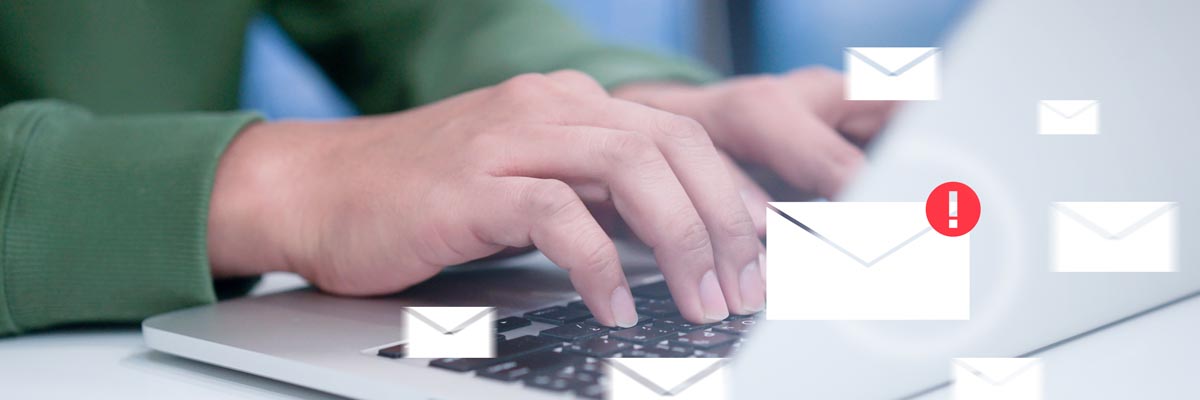There are many ways we know someone wants to include us in an activity. If your colleagues want you to join them for lunch, they make sure there is a seat at the table for you. If they want you to be a part of a work group, they may avoid scheduling the meeting on the day you need to pick up your child early from daycare. Emails also have these subtle cues that indicate you want to include your colleagues.
With many people working from home, there has been a sharp increase in the use of emails. Whether you are emailing a group of colleagues or your entire department, take the time to send accessible emails. If you are a State of Minnesota employee you are required to follow the /mnit/government/policies/accessibility/index.jspState of Minnesota Digital Accessibility Standard, which includes emails. But more than that, accessible emails communicate to our colleagues with disabilities that they are valued members of the team.
Take some time on Global Accessibility Awareness Day, and throughout the year, to brush up on your accessible email skills. Here is a checklist to get you started.
Subject Line
- Include key words about the email topic. This will increase the readability of the subject line, and help people find the email later.
- Don’t have the file name be the subject line. Sometimes we use the share option within a document to start an email. This automatically creates a subject line using the file name. It may be more difficult to read, or hard to pronounce for those using assistive technologies.
Text
- Use meaningful text for links. Instead of using text that begins with www(dot)…, be sure the reader knows where the link will take them. For example: “I thought you might enjoy this article about Accessible Remote Documents.” This is also more informative than “click here” or “learn more.”
- Use styles for headings in long emails. Ever get a super long email? They can be hard to visually scan so you can preview their content and find out which parts require immediate action. Though you will need fewer heading levels than in a document, using headings helps everyone quickly find what they need in an email, including those using assistive technology.
- Don’t use hard to read fonts, font sizes, or font colors. Just as you would for documents and web pages, choose your font family, size, and color carefully. Set your preference as the default if your employer doesn’t already have one that all employees must use.
- Don’t forget about list formatting. Notice how the bullets make it easy to determine how many items are in this list? Properly format lists in emails to help everyone use information more efficiently.
Images
- Include important images like screen shots. Images help many people understand your point. While many are working remotely, we often have to digitally “show” someone what we are talking about since we cannot go to their desk.
- Add alternative text to images. If someone needs to read text that provides a description of your image, alternative text makes sure they will have access to the same information as everyone else. Remember: good alternative text is short, and similar to how you might describe the image to a colleague over the phone.
- Don’t forget about your logo! Your email signature often includes your organization’s logo. Be sure to have alternative text for logos, including your social media channels. Need instructions? Check out a presentation we gave on how to create accessible templates for an entire state (PDF). It has instructions for creating and deploying accessible email signatures.
A Few Other Tips
- Use properly formatted tables. Tables are a great way of organizing data you need to share. Just make sure it is an accessible table.
- Don’t use tables for layout. There are much better tools in most email clients for making your email look good. This includes styles, ways to add white space properly, even ways to add columns. Tables for layout may cause some of your users to have trouble accessing your email using assistive technology.
- Don’t use a background color. While your email may stand out when you use a colored background, it can cause lots of difficulty for your readers. If they have challenges with their vision, it may make it harder to find your links. If they forward your email to someone else, the background color may make their default font color difficult to read.
Our biggest tip for creating accessible email? Take our /mnit/about-mnit/accessibility/training/word-document-training.jspAccessible Word Document Training. You will learn how to follow all of the tips discussed in this article, and the skills will also apply to your Word documents. Happy Global Accessibility Awareness Day! Thank you for taking time to learn more about digital accessibility.
Subscribe to our Newsletter
Would you like to learn more about the accessibility work being done by Minnesota IT Services and the State of Minnesota? Once a month we will bring you more tips, articles, and ways to learn more about digital accessibility.
Subscribe Today
